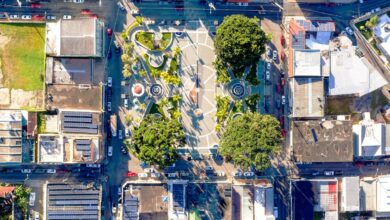How to EMP-Proof a Building

This year, the sun will reach solar maximum, a period of peak magnetic activity that occurs approximately once every 11 years. That means more sunspots and more frequent intense solar storms. Here on Earth, these result in beautiful auroral activity, but also geomagnetic storms and the threat of electromagnetic pulses (EMPs), which can bring widespread damage to electronic equipment and communications systems.
Yilu Liu
Yilu Liu is a Governor’s Chair/Professor at the University of Tennessee, in Knoxville, and Oak Ridge National Laboratory.
And the sun isn’t the only source of EMPs. Human-made EMP generators mounted on trucks or aircraft can be used as tactical weapons to knock out drones, satellites, and infrastructure. More seriously, a nuclear weapon detonated at a high altitude could, among its more catastrophic effects, generate a wide-ranging EMP blast. IEEE Spectrum spoke with Yilu Liu, who has been researching EMPs at Oak Ridge National Laboratory, in Tennessee, about the potential effects of the phenomenon on power grids and other electronics.
What are the differences between various kinds of EMPs?
Yilu Liu: A nuclear explosion at an altitude higher than 30 kilometers would generate an EMP with a much broader spectrum than one from a ground-level weapon or a geomagnetic storm, and it would arrive in three phases. First comes E1, a powerful pulse that brings very fast high-frequency waves. The second phase, E2, produces current similar to that of a lightning strike. The third phase, E3, brings a slow, varying waveform, kind of like direct current [DC], that can last several minutes. A ground-level electromagnetic weapon would probably be designed for emitting high-frequency waves similar to those produced by an E1. Solar magnetic disturbances produce a slow, varying waveform similar to that of E3.
How do EMPs damage power grids and electronic equipment?
Liu: Phase E1 induces current in conductors that travels to sensitive electronic circuits, destroying them or causing malfunctions. We don’t worry about E2 much because it’s like lightning, and grids are protected against that. Phase E3 and solar magnetic EMPs inject a foreign, DC-like current into transmission lines, which saturates transformers, causing a lot of high-frequency currents that have led to blackouts.
How do you study the effects of an EMP without generating one?
Liu: We measured the propagation into a building of low-level electromagnetic waves from broadcast radio. We wanted to know if physical structures, like buildings, could act as a filter, so we took measurements of radio signals both inside and outside a hydropower station and other buildings to figure out how much gets inside. Our computer models then amplified the measurements to simulate how an EMP would affect equipment.
What did you learn about protecting buildings from damage by EMPs?
Liu: When constructing buildings, definitely use rebar in your concrete. It’s very effective as a shield against electromagnetic waves. Large windows are entry points, so don’t put unshielded control circuits near them. And if there are cables coming into the building carrying power or communication, make sure they are well-shielded; otherwise, they will act like antennas.
Have solar EMPs caused damage in the past?
Liu: The most destructive recent occurrence was in Quebec in 1989, which resulted in a blackout. Once a transformer is saturated, the current flowing into the grid is no longer just 60 hertz but multiples of 60 Hz, and it trips the capacitors, and then the voltage collapses and the grid experiences an outage. The industry is better prepared now. But you never know if the next solar storm will surpass those of the past.
This article appears in the June 2024 issues as “5 Questions for Yilu Liu.”
IEEE Spectrum




